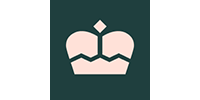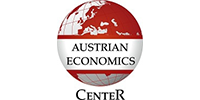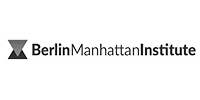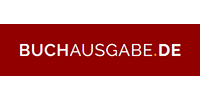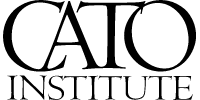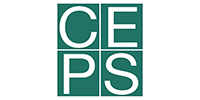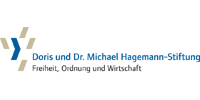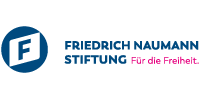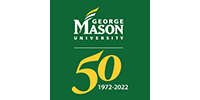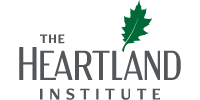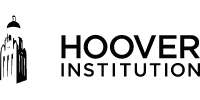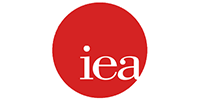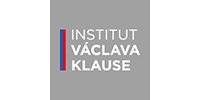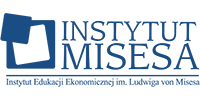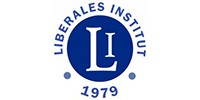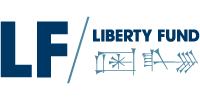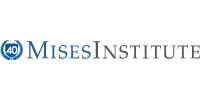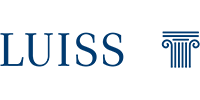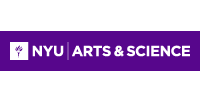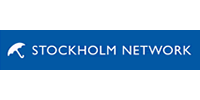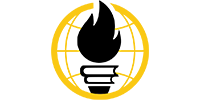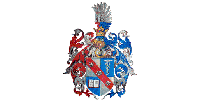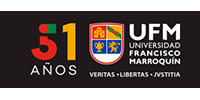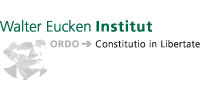3rd Award in Vernon Smith Prize 2024
(2/2 ex aequo)
The Public-Private Paradox of Education: Merit Good or Negative Externality?
Patrick Tecklenburg
ABSTRACT
This essay explores education`s multifaceted role as a private, a public and a merit good, with an intertwined reflection on its historical evolution and modern-day relevance. From its origins as a privilege, mainly only affordable by the elite to the widespread vision and long term implementation of compulsory education systems, education has transitioned into a globally recognized right. Building on the frameworks of Musgrave (1956) and Ostrom (2005), this paper sheds light on the dual role of education in delivering individual advantages, such as personal development and economic welfare, alongside positive societal spillover effects, including technological advancements, civic engagement and reductions in inequality. Insights from Wilhelm von Humboldt’s philosophy highlight the tension between individual freedom which determines the subjective value of learning and state-controlled education as it is the case with public compulsory education systems. This paper advocates for a nuanced approach to education policy by addressing systemic challenges from all perspectives, such as standardization, inefficiency, bureaucracy and ideological interferences as education has the potential to maximize its purpose as a personal empowerment tool and a universal social asset.
Introduction: History of Education as a Good
In Washington DC, among the many quotes in the halls of the Library of Congress a quote can be found called „The foundation of every state is the education of its youth.“ by the Greek philosopher Diogenes (Wang, 2021). Looking back over the last millennia and the most impactful civilizations since humankind has settled, it becomes apparent that these were mostly advanced civilizations with a technological edge and advantage in allowing and conducting research. For this lead to be sustained, societies had the tendency to maintain a well-educated upper class as education was considered a privilege each family had to deal with itself and a private good. This continued up until the “Generallandschulreglement” (General School Regulation) of 1763-1765 in Prussia which introduced modern compulsory education. Empress
Maria Theresa followed in 1774 and since then the idea of education as a public good has spread all around the globe – today, the right to education is enshrined in article 26 of the Universal Declaration of Human Rights.
It is noteworthy that the Aztec Triple Alliance (1428-1521) is said to be the first state with a compulsory universal education system independent of classicism, gender and other categorizations. Earlier systems such as the Spartan education system were mainly militarily focused, therefore not providing universality. At roughly the same time, Plato is said to have disseminated the idea of compulsory education for the first time in Western intellectual reasoning in his work “The Republic” (~375 BC).
According to Musgrave (1956), a merit good is a service or item which boosts society overall via positive externalities while benefiting individual customers. This theory is best displayed by education, as it promotes economic opportunity and personal development while also delivering society advantages including less inequality and civic involvement. Ostrom (2005) elaborates further by classifying goods according to competition and excludability. The complexity of education as a merit good is underlined according to its delivery method same as a private good. Education transcends its private advantages and promotes equity and societal welfare when it is accessible and publicly funded. Together, the frameworks of Musgrave and Ostrom demonstrate how education’s dual purpose supports its consideration as a merit good and a priority for public investment. Therefore, this paper will examine the question of how education can be classified as a public, private, or merit good, and how do the benefits and externalities of public education systems affect individual freedom and societal advancement.
Humboldt’s Views on Individual Freedom in Education and its Subjective Value
Wilhelm von Humboldt`s philosophy was deeply rooted in the ideals of personal growth and autonomy, which he applied to the topic of education in his work “On the Limits of State Action” (1852). Hereby, he envisioned education not simply as a means to gain knowledge but as a vital instrument for individual self-development and freedom. This emphasis on individual freedom substantiates into the foundation of his views on education. According to him, there is no one-size-fits-all approach but the necessity for a system that is personalized, intrinsically motivated and aimed at the cultivation of every individual`s unique potential. Additionally, the respect of personal autonomy in one`s education allows individuals to pursue knowledge adapted to one`s own capacities, ambitions and interests. This process would consequently foster personal fulfillment, independent judgement and critical self-reflection which he saw as essential for a free and democratic society. Humboldt saw this path as more promising to
achieve intellectual freedom within a free society. For him a state-controlled education system has a tendency to impose uniform standards via curricula, or other state-driven objectives which would stifle education`s supposed intrinsic value – the manifestation of independent thought and character development. As a result of these thoughts he came to the conclusion that the value of education must be subjective and cannot be evaluated objectively – it is a personal good, not a collective duty. He refrained from any economic value measurement of education such as productivity or utility, but argued its intrinsic value which could be seen different from each person’s perspective. However, following Humboldt`s argument, education is closer to a private good than a public as it is not supposed to be uniformly distributed, but follows individual aspirations and needs. Therefore, the ultimate goal of this philosophy would be a society of self-learners, each specializing in their own respective interests and aspirations (Humboldt, 1969).
Despite this absolution of individual freedom and subjectivity, Humboldt does not disregard the advantages of an educated population and its societal benefits. He notes the generation of knowledge, advancements in culture and science as well as a civilized society in general. Even so, based upon his work “Theory of Bildung” (1793/94) these desirable outcomes for society should not be produced by the state in an attempt to control education but rather be seen as a byproduct of personal growth – not the primary purpose of education (Luth, 1998). This interpretation aligns with modern interpretations of education as a merit good as education provides both private and social benefits. Education, when pursued as a path to individual enlightenment and fulfillment, inadvertently strengthens societal structures, also formulated by Kant (1784). Though it is clearly stated that this indirect social benefit does not justify coercive educational mandates, it rather highlights the role of personal choice in fostering a genuinely enlightened society.
Likewise, the critique of state intervention lies at the heart of Humboldt`s educational philosophy. Any form of standardized knowledge and values undermine the subjective nature of learning, diversity of thought and individuality in expression. While he remained vigilant in “On the Limits of State Action” (1852), he wrote in a letter to the Prussian king which became one of the foundations for the Humboldtian model of higher education:
“There are undeniably certain kinds of knowledge that must be of a general nature and, more importantly, a certain cultivation of the mind and character that nobody can afford to be without. People obviously cannot be good craftworkers, merchants, soldiers or businessmen unless, regardless of their occupation, they are good, upstanding and – according to their condition – well-informed human beings and citizens. If this basis is laid through schooling, vocational skills are easily acquired later on, and a person is always free to move from one occupation to another, as so often happens in life.” (Günther, 1988)
Though this quote might initially seem contradictory for his conviction of individual freedom in education, it is a complementation of his broader educational ideals:
- For Humboldt, a foundational knowledge and character laid the basis for autonomy as reflected in “a certain cultivation of the mind and character” (Günther, 1988), as this is crucial in progressing into ethical and well-informed citizens. This foundational education should rather be seen as equipping individuals with the basic virtues and skills necessary to act autonomously and participate in society, not an imposition of conformity.
- Another aspect that emerges from the quote is Humboldt`s vision of lifelong learning and adaptability. The broad initial intellectual base combined with vocational training and a strong moral foundation is set to ensure adaptability between various life roles and professions, giving individuals the freedom to pursue different occupations and interests as their lives evolve.
- Humboldt’s model of higher education seeks a balance between personal growth and social cohesion. A society of self-reliant thinkers requires a shared baseline of education so diverse, specialized knowledge can be built upon it as well as ensuring social responsibility.
- Aligned with his worries of prescribed curricula, Humboldt called for independent educational institutions, hereby especially universities, to be spaces where individuals could pursue deeper learning freely – while simultaneously recognizing that all individuals benefit from shared virtues and knowledge.
Humboldt’s critique remains relevant in contemporary discussions on education reform. From the points outlined in Humboldt`s view, Musgrave (1956) shares the notion that next to private, individual consumption, societal benefits are generated which attributed to the categorization of education as a merit good. Systems overly influenced by political agendas or economic priorities may neglect or even suppress critical thinking, creativity, and independent inquiry. As Humboldt feared the politicization of education, the matter of education as a means of control or a path to liberation has sparked academic discussions about the (political) development of humankind as well as comparisons between political systems.
Social and Private Benefits of Educated Individuals
Education can be seen as an investment with returns that not only benefit the individual but extend into society. This is one of the main arguments why debates have shifted from seeing education simply as a private or a public good but rather as a merit good which should be available to everyone according to the Human Rights Charter.
To begin with, there is a variety of private benefits to education which are directly accruable to the individual due to their learning experience. Additionally, these benefits might be self-motivational as an educational foundation tends to foster further personal and professional growth – which already translates into the first advantage of having educated individuals. Education fosters intellectual curiosity and critical thinking, encouraging individuals to explore their interests and expand their worldviews – for many people it leads to pursuing education not just for economic reasons but for the intrinsic pleasure of self-discovery and learning. This sense of personal fulfillment leads to increased confidence, which strengthens overall well-being as well. Concerning well-being, studies have shown educated people to have improved health and higher quality of life, on one hand due to more informed, sustainable and conscious lifestyle choices in terms of taking care of oneself with exercise and a healthy diet, on the other hand due to more fortunate access to healthcare resources (Schuller, Preston, Hammond, Brassett-Grundy, & Bynn, 2004). This access to healthcare resources corresponds with the socio-economic advantages of education, as people with more healthcare access tend to have more resources in general. Hereby, education with its strong correlation to higher-paying jobs as well as greater job security proves not only to give a competitive advantage in the labor market but also increase financial stability, lowering the risk for financial-induced stress and hardship (Oreopoulos & Salvanes, 2011). Due to such greater financial possibilities, individuals are better equipped to overcome socio-economic barriers, which increases their social mobility and lets them contribute to a more equitable society. One
example of this is the fact that with greater wealth, people are able to travel and experience more, increasing their social mobility and network locally and globally, depending on one`s desires. As a result, one could argue that education is the most sustainable path towards building financial, mindful and health-related wealth.
Besides the mentioned private benefits and the collective impact of an educated society, social benefits of education are framed as positive externalities or spillover effects. From an economic perspective, educated individuals can increase overall productivity as they possess the skillset that drives efficiency and innovation which increases standards of living in the long term (Hanushek & Woessmann, 2015). Studies show that countries with higher levels of education tend to experience greater technological advancement and global competitiveness. Additionally, education gives societies a better chance to address matters of social division and inequality as universal access to education reduces socio-economic disparities in the hopes of creating a more inclusive society. As an example, García & Weiss (2017) in their investigation of the reachability of the “American Dream” and equality of opportunity in the US came to the conclusion that the percentage of children who earn more than their parents has fallen from 90 percent for people born in the 1940s down to 50 percent for people born in the 1980s. Despite parents having generally higher levels of education than in the previous decades and higher parental investments in their children’s education, achievement gaps have skyrocketed since the 1960s. It is noteworthy to mention the disparity between children at the upper end compared to everyone else – the societal class in the upper fifth increased education-enhancing investment from $3,500 in 1972 to $8,900 in 2006 while the bottom income fifth rose from $800 in 1972 to $1,300 in 2006. Given that parental investment translates into children`s
achievement and preparation, these figures underline the prevalence of classicism with an enlargement of achievement gaps between income classes, even increasing the social and economic gap in the US. Not only do these results exemplify the links between economic disparity and achievement gaps or how the “American Dream” becomes more and more of an impossibility for large social classes, but they exemplify possible issues with treating education more as a private good with an inadequately equipped public option as a fallback option (García & Weiss, 2017). Apart from inequality within, as well as between countries, it is consensus among researches that Covid-19, as well as the reemergence of several conflicts has deepened inequality globally from both an economic and educational perspective, underlying their correlation (Langthaler & Malik, 2023).
In terms of social welfare, an educated society leads to higher public health as well as safer communities since more educated individuals are less likely to engage in criminal behavior.
In democratic societies, education leads to enhanced civic engagement and democratic participation such as voting, volunteering, and civic organizations. Critical self-reflection and independent thinking leads to more informed decision-making and higher contribution to democratic governance. Social cohesion can also be fostered as education encourages empowerment, awareness of social justice and tolerance between individuals from different backgrounds (Dee, 2004).
This interplay between private and social benefits of education have laid the groundwork for today`s industrialized and modern societies. While the short-term rewards might be private, the ultimate benefits settle within the social fabric. Contributions of educated citizen make education a shared societal asset. Examples would be an entrepreneur creating economic growth and jobs or a healthcare worker not only securing financial stability for themselves but providing an essential societal service.
These social benefits can also be constrained by uneven distribution or inaccessibility of education, deepening systemic inefficiency and inequality. Moreover, a holistic approach to education must include the development of broader social competencies and not only focus on standardized testing. To maximize education`s potential in welfare, intergenerational biases need to be minimalized as education is still dependent on ancestorial education (e.g. well-educated children tend to have well-educated parents, deepening educational inequality) – maximal social welfare can be achieved by creating opportunities for everyone independent from external influences as established by Humboldt`s ideals.
Public Education’s Dual Role: Balancing Merit Good and Private Interests
The tensions between private interests and the merit good role of education can be summarized in three main conflicts: the divergence between uniform standards and individual needs, adequate resource allocation tailored to the necessities and the potential for limited innovation and failure in adaptability.
First of all, the concern of uniformity and standardization has been raised by Humboldt as well. Education as a merit good, supposed to broadly deliver societal gains, might limit its ambition to cater individual needs and ambitions (Musgrave, 1956). Personal autonomy might be suppressed by uniformity and standardized curricula. Especially when collective goals are intended e.g. by governments or the institutions themselves, then personal aspirations might be suppressed (Apple, 2004).
An intention of the idea of public compulsory education is to provide all students with similar, often even phrased as equal, opportunities. Therefore, the distribution of resources needs to be equitable, as well as allocated where needed – an imbalance of well-resourced students receiving more individualized support while others receive the standardized minimum may inadvertently increase inequality and privilege some private interests over others (Labaree, 1997). Considering the original goals of initiating compulsory education, it cannot be neglected that looking at the development of the Gini coefficients, distributions of global education inequality and education levels from 1950 – 2010, the data suggests a decline in global education inequality over time. The results of Benaabdelaali, Hanchane, & Kama (2012) further demonstrate that the median and minimum education levels within countries are rising. Combined with the development of more countries implementing public education systems and
enforcing their compulsory schooling laws more rigidly during this time, one might suggest that rising average education levels within a society are a consequence of treating education as a public good, however the resource distribution might be. This data could be combined with economic inequality indexes and education spending data globally to get more accurate insights. Of course, evaluations of how education levels develop as well as how resources are used efficiently always depend on the Key Performance Indicators measured. Rising inequality continues to be a global problem, however the progress made in public education so far should be acknowledged and taken as lessons learned for further global implementation. Considering education policy there are always equilibriums and pareto-efficient outcomes to be examined.
Since government frameworks are included in the curricula, public education might be biased towards stability instead of adaptability or innovation. Bureaucratic constraints can restrict curricular flexibility if the state is too involved or might hinder the implementation of new teaching methodologies (Le Grand, 1991). Not only creativity can be limited due to such developments but also job markets evolve with technological progress – rigid structures within an education system might fail to meet such an evolution and produce alumni unadjusted to present challenges.
As education has net positive externalities at all times, public education only generally yields positive spillovers such as societal coherence and stability. Whether intended due to balancing trade-offs between private and public education or unintended, there are possible negative consequences of public education systems:
- Independent from the state`s agenda or political system, there are possibilities of the education system being subjected to political or ideological influence (Apple, 2004). Naturally, there might be thresholds or more barriers for the politicization of an education system, but no system is without bias and completely safe from all external and internal influence. Possible influences might create an environment where conformity is more encouraged than to question or explore varying perspectives
(Freire, 1970). For instance, after the US-election of 2024, the risks of politicization within the US education system might escalate as both parties have different views
on topics such as charter schools and will try to push their own agenda as well as a possible complete overhaul of the system due to Project 2025. - Expanded on the previously noted weakness of inefficiency and bureaucracy, large education systems might not yield optimal outcomes – e.g. via outdated and non-adapted curricula, poor resource allocation or over boarding administrative costs diverting funds from direct educational uses (Labaree, 1997).
- Largely centralized educational systems might reduce community engagement as parents and communities are excluded from school governance and participating in the educational process, leading to a feeling of disengagement and limiting social support for the educational system.
- As more and more people are able to achieve a degree due to public education, credential inflation might lead to entry-level positions declaring the necessity for degrees. This would increase the thresholds for employment, leading to a cycle of people pursuing higher education levels for economic mobility and competition for credentials instead of learning meaningfully.
- Fiercely debated in the public discussions about universal accessibility of university, the fear of diluting academic standards to adapt it to the range of competencies and backgrounds continues to be named. A “one-size-fits-all” approach bears the danger of leaving students unchallenged (Breen & Müller, 2020), especially if the approach is set at the lowest common denominator – not only endangering the personal career and learning of the students, but even competitiveness of society in the global economic fabric and preservation of scientific knowledge.
Conclusion: A Nuanced View of Education’s Merit Good Status
As established, education carries a unique, multifaceted and complex role, with blurring lines between being a private investment, a tool for public wellbeing and a merit good. The private benefits with positive externalities for the public classify education as a merit good carrying an intrinsic value that expands beyond immediate economic returns and calculations (Musgrave, 1956). In balancing accessibility and fairness countered to individual autonomy, innovation needs and flexibility of thought, public education systems always need to reflect on possible bureaucratic inefficiencies, excessive standardization or other possible negative spillover effects. For policymakers, education`s dual role – private good for the individual and merit good serving collective interests – necessitates a careful balancing act between combatting systemic inequalities and ensuring quality education accessible to all with enough flexibility and autonomy for educators, but without political bias or external pressure.
Ultimately, education`s status of being a merit good reveals the potential to serve as a bridge between individual ambitions and societal progress. All stakeholders – policymakers, educators and the entirety of social discourse – may embrace a nuanced view of education in acknowledging the (private) benefits, (public) responsibilities and incriminated tensions in making education systems more effective. When thoughtfully managed, education can remain a powerful force for personal empowerment and collective advancement in being a personal and universally shared good.
Patrick Tecklenburg graduated University of Innsbruck with the diploma in International Business and Economics (equivalent to a Master’s degree) and worked Permanent Mission of the Principality of Liechtenstein to the United Nations on an Adviser position.
References
Apple, M. (2004). Ideology and Curriculum.
Benaabdelaali, W., Hanchane, S., & Kama, A. (2012). Educational Inequality in the World, 1950–2010: Estimates from a New Dataset. Research on Economic Inequality – Inequality, Mobility and Segregation: Essays in Honor of Jacques Silber, 337-366.
Breen, R., & Müller, W. (2020). Education and Intergenerational Social Mobility in Europe and the United States. Stanford University Press.
Dee, T. (2004). Are there civic returns to education? Journal of Public Economics, 88(9-10), 1697-1720.
Freire, P. (1970). Pedagogy of the Oppressed.
García, E., & Weiss, E. (2017). Education inequalities at the school starting gate – Gaps, trends, and strategies to address them. Retrieved from https://www.epi.org/publication/education- inequalities-at-the-school-starting-gate/#epi-toc-18
Günther, K.-H. (1988). Profiles of educators: Wilhelm von Humboldt (1767–1835) (Vol. 18). Prospects.
Hanushek, E., & Woessmann, L. (2015). The Knowledge Capital of Nations: Education and the Economics of Growth. MIT Press.
Humboldt, W. (1969). The Limits of State Action. (J. Burrow, Ed.) Cambridge University Press.
Kant, I. (1784). An Answer to the Question: “What is Enlightenment?”.
Labaree, D. (1997). Public Goods, Private Goods: The American Struggle over Educational Goals (Vol. 34). American Educational Research Journal.
Langthaler, M., & Malik, J. (2023). Inequalities in education from a global perspective – Theoretical approaches, dimensions and policy discussions. OFSE. Retrieved from www.oefse.at/fileadmin/content/Downloads/Publikationen/Briefingpaper/BP34-Inequalities- in-education.pdf
Le Grand, J. (1991). Equity and Choice: An Essay in Economics and Applied Philosophy.
Luth, C. (1998). On Wilhelm von Humboldt’s Theory of Bildung. Journal of Curriculum Studies, 30, 43-59.
Musgrave, R. (1956). A Multiple Theory of Budget Determination. FinanzArchiv / Public Finance Analysis, 17(3), 333-343.
Oreopoulos, P., & Salvanes, K. (2011). Priceless: The Nonpecuniary Benefits of Schooling. Journal of Economic Perspectives, 25(1), 159–184.
Ostrom, E. (2005). Understanding Institutional Diversity. Princeton University Press.
Schuller, T., Preston, J., Hammond, C., Brassett-Grundy, A., & Bynn, J. (2004). The Benefits of Learning: The Impact of Education on Health, Family Life and Social Capital.
Wang, L. (2021). Science Popularisation Among the Youth.


